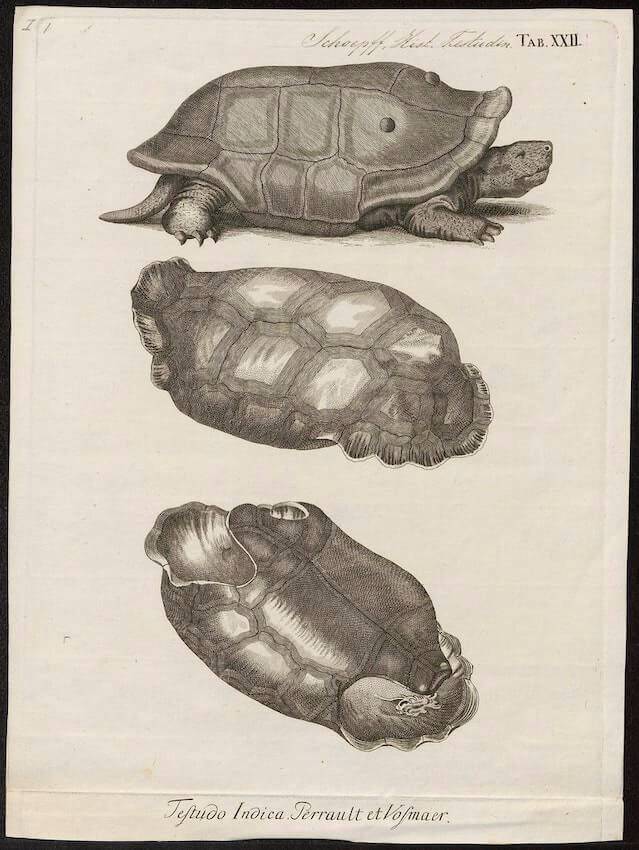Comparable in size to modern Galapagos giant tortoises, this animal was endemic to Réunion, where its vast creeps were important for maintaining the biodiversity of forests. Noted to be friendly, curious, and without fear, its populations were exploited by passing sailors in need of oil and food, further shrinking when settlers from France and Madagascar began to occupy the island in the seventeenth century. Like its fellow Mascarene giant tortoise species, the animal's slow metabolism allowed it to survive without food or water for extended periods, making it perversely suited for being packed into ship holds. While attempts at preservation were legislated for tortoises on Mauritius in the seventeenth century, meaningful protection was not offered for more than a century. The introduction of invasive species further decimated hatchling numbers, with the final observed tortoises dying off in the 1840s. One of the only taxidermized Mascarene tortoise specimens is kept in the haunting Grande Galerie de l'Évolution's
Salle des Espèces Menacées et des Espèces Disparues (The Room of Endangered and Extinct Species) in Paris. As Matt Stanfield
writes at the
Remembrance Day for Lost Species project, Disappearing when they did, at a time when modern science was still emerging, the Mascarene giant tortoises occupy a strange halfway house between poorly-understood human-induced casualties of the early modern era and better-known lost species of more recent times.

